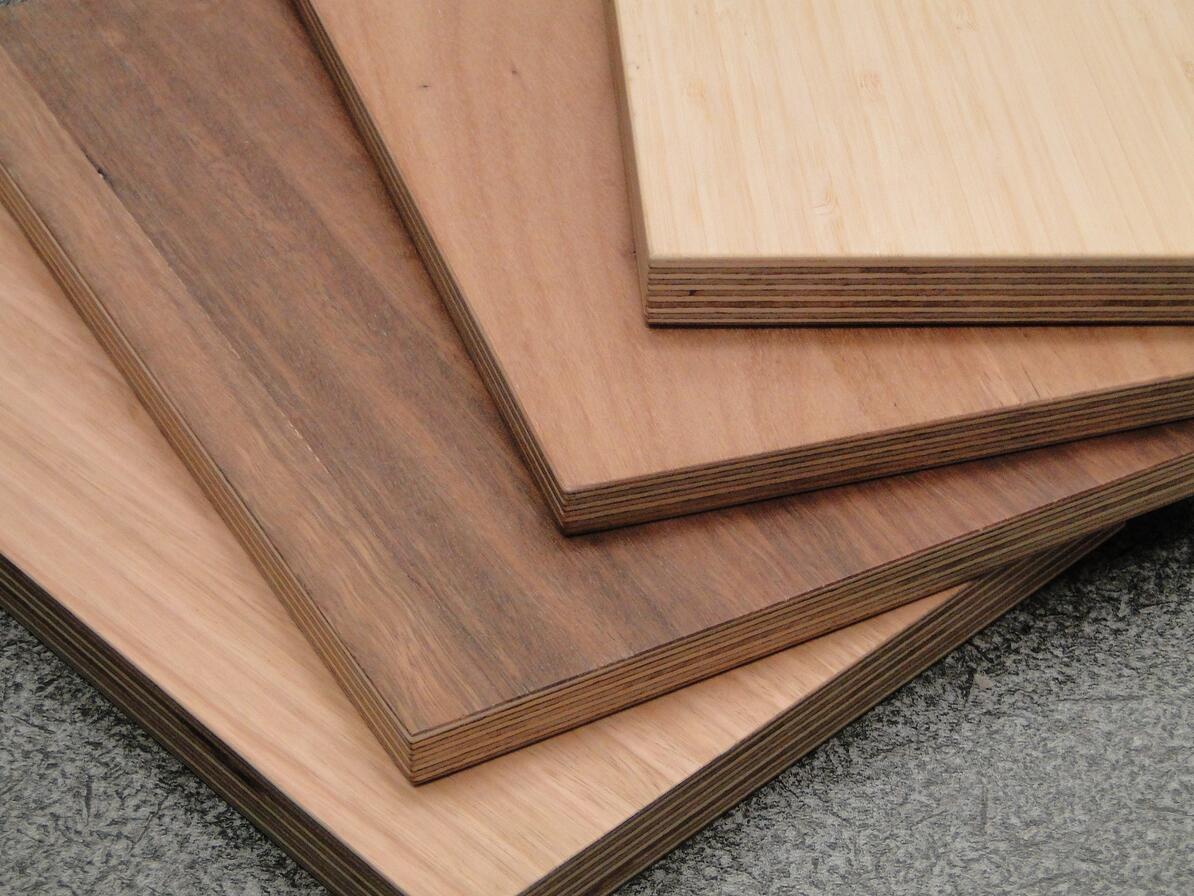02—09—2020
How Is Plywood Made? From Raw Timber To Architectural Statement
All Architects and Builders would have seen firsthand the versatility in plywood as a material. Not only is plywood durable and attractive, it can also be crafted into some spectacular design features in both residential and commercial settings.
So how exactly is the raw timber selected for plywood transformed into panels that can be used for such a wide range of designs and purposes? In this article we’re sharing an overview of the process to help you understand how plywood is made.
Step One: The Timber
Plywood can be crafted from a wide variety of trees and the selected specimens can be smaller than those used for other types of timber products. Some of the commonly used species for plywood include hardwood trees like birch, blackbutt, oak, okoume, poplar, spotted gum and walnut, as well as softwood species including Hoop pine, Monterey pine, Radiata pine and Douglas fir.
At Maxiply, our timber is responsibly sourced from FSC® certified plantations, which is an important step towards reducing our environmental footprint. Once the trees are selected and cut, they are taken to the mill ready to begin their transformation from timber logs into plywood panels.
Step Two: The Mill
Once at the mill, the logs are debarked using a specialised machine, then cut into sections suitable for crafting the plywood sheets. The next stage involves submerging the timber in hot water to soften the sections up. The length of time this takes is dependent on the species of wood, but it is generally 12 hours at a minimum. After the sections are removed, they are fed through a peeler lathe which peels a continuous sheet of veneer that is ready to process.
Step Three: Putting It Together
Next, the veneers are cut into a workable size, checked for defects, sorted into grades and then dried. The layers can now be glued together as specified to create the various plywood panels, and this can be done manually or with the help of machines. Once the glue is on, the panels are pressed, using extreme pressure and heat to bind them securely. When they come off the press, the plywood panels are cut to the length and width required, and sanded to various levels depending on the grade.
The completed plywood panels can now be used to create a wide range of designs and finishes for residential and commercial projects.
The Proof Is In The Results
As you can see, a lot of work goes into the process of creating plywood panels – from the initial selection of timber, through the various stages of processing, and finally in the execution of design specifications that bring your project to life. It’s also clear that the hard work and effort is well and truly worth it – and the proof of this is in the stunning results seen in projects, from designer kitchens to impressive large-scale architectural statements.
Have a question about our timber, processes or plywood panels? We’d love to hear from you – please get in touch with our team on 1300 761 741.

02—09—2020
All Architects and Builders would have seen firsthand the versatility in plywood as a material. Not only is plywood durable and attractive, it can also be crafted into some spectacular design features in both residential and commercial settings.
So how exactly is the raw timber selected for plywood transformed into panels that can be used for such a wide range of designs and purposes? In this article we’re sharing an overview of the process to help you understand how plywood is made.
Step One: The Timber
Plywood can be crafted from a wide variety of trees and the selected specimens can be smaller than those used for other types of timber products. Some of the commonly used species for plywood include hardwood trees like birch, blackbutt, oak, okoume, poplar, spotted gum and walnut, as well as softwood species including Hoop pine, Monterey pine, Radiata pine and Douglas fir.
At Maxiply, our timber is responsibly sourced from FSC® certified plantations, which is an important step towards reducing our environmental footprint. Once the trees are selected and cut, they are taken to the mill ready to begin their transformation from timber logs into plywood panels.
Step Two: The Mill
Once at the mill, the logs are debarked using a specialised machine, then cut into sections suitable for crafting the plywood sheets. The next stage involves submerging the timber in hot water to soften the sections up. The length of time this takes is dependent on the species of wood, but it is generally 12 hours at a minimum. After the sections are removed, they are fed through a peeler lathe which peels a continuous sheet of veneer that is ready to process.
Step Three: Putting It Together
Next, the veneers are cut into a workable size, checked for defects, sorted into grades and then dried. The layers can now be glued together as specified to create the various plywood panels, and this can be done manually or with the help of machines. Once the glue is on, the panels are pressed, using extreme pressure and heat to bind them securely. When they come off the press, the plywood panels are cut to the length and width required, and sanded to various levels depending on the grade.
The completed plywood panels can now be used to create a wide range of designs and finishes for residential and commercial projects.
The Proof Is In The Results
As you can see, a lot of work goes into the process of creating plywood panels – from the initial selection of timber, through the various stages of processing, and finally in the execution of design specifications that bring your project to life. It’s also clear that the hard work and effort is well and truly worth it – and the proof of this is in the stunning results seen in projects, from designer kitchens to impressive large-scale architectural statements.
Have a question about our timber, processes or plywood panels? We’d love to hear from you – please get in touch with our team on 1300 761 741.






